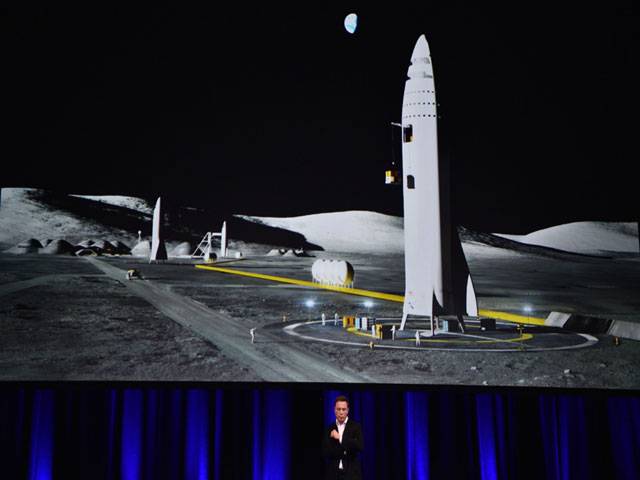ADELAIDE-Futurist and inventor Elon Musk unveiled ambitious plans Friday to send cargo ships to Mars in five years and use rockets to carry people between Earth’s major cities in under half-an-hour.
The founder of SpaceX said a planned interplanetary transport system, codenamed BFR (Big Fucking Rocket), would be downsized so it could carry out a range of tasks that would then pay for future Mars missions.
“The most important thing... is that I think we have figured out how to pay for (BFR),” Musk told a packed auditorium at a global gathering of space experts in Adelaide.
“Which is to have a smaller vehicle, it’s still pretty big, but one that can... do everything that’s needed in the greater Earth orbit activity.” Musk said his firm had starting building the system, with the construction of the first ship to start in six to nine months. “I feel fairly confident that we can complete the ship and launch in about five years,” he added.
At least two cargo ships would land on the Red Planet in 2022, with the key mission of finding the best source of water - currently mooted as a way to power rockets, he said.
The rockets would place power, mining and life-support infrastructure on Mars to support future missions, with four ships set to take people, equipment and supplies to the planet in 2024. The trips would be funded by a range of activities, including launching satellites, servicing the space station and lunar missions, he said. Musk added that the rockets should also cater to Earth inhabitants by reducing the travel between major cities to less than half-an-hour. A trip from Bangkok to Dubai would take 27 minutes, and from Tokyo to Delhi in 30 minutes, according to his calculations.
“Once you are out of the atmosphere, it would be as smooth as silk, no turbulence, nothing,” he said. “There’s no weather... and you can get to most long-distance places in less than half-an-hour. If we are building this thing to go to the Moon and Mars, then why not go to other places on Earth as well.”
The week-long annual International Astronautical Congress, which concluded Friday, has seen government space agencies and private firms outline their plans to send humans to the Moon and Mars in the next few decades.
This included an agreement between Russian space agency Roscosmos and NASA to work on the first lunar space station as part of a programme called the Deep Space Gateway.
Meanwhile, a reusable, water-powered Mars lander that will allow humans to explore the Red Planet from an orbiting ‘base camp’ as early as the 2030s was unveiled Friday by US defence giant Lockheed Martin.
Governments and private firms are collaborating on projects to send humans to new frontiers, with Nasa planning missions next decade into the space between Earth and the Moon to prepare for trips to Mars.
Lockheed Martin has been working on its “Mars Base Camp”, a science laboratory that will orbit the planet, with the crewed lander set to descend to the surface on repeated missions.
“It looks a bit like Jules Verne, but it’s actually more like an aircraft that we’ve flown in the past,” Lockheed Martin’s human spaceflight strategy chief Rob Chambers said, at a gathering of the world’s leading space experts in the Australian city of Adelaide.
Up to four astronauts could join each two-week surface mission, while liquid hydrogen generated from water would fuel the spacecraft, he added.
“We can create that fuel. We can power this entire spacecraft system just with water,” said Chambers, describing it as a “water-based economy”.
Lockheed Martin is among several companies working on deep space habitats with NASA, which hopes to send the first astronauts to Mars in the 2030s.
Chambers called the Mars vision “a transformational event for our generation”, adding: “It’s literally (the) dawn of the new age of discovery about ourselves and about our solar system and about our place in it.”
The International Astronautical Congress concludes on Friday with a presentation by SpaceX’s Elon Musk, who will outline a new design for an interplanetary transport system to take humans to Mars.






